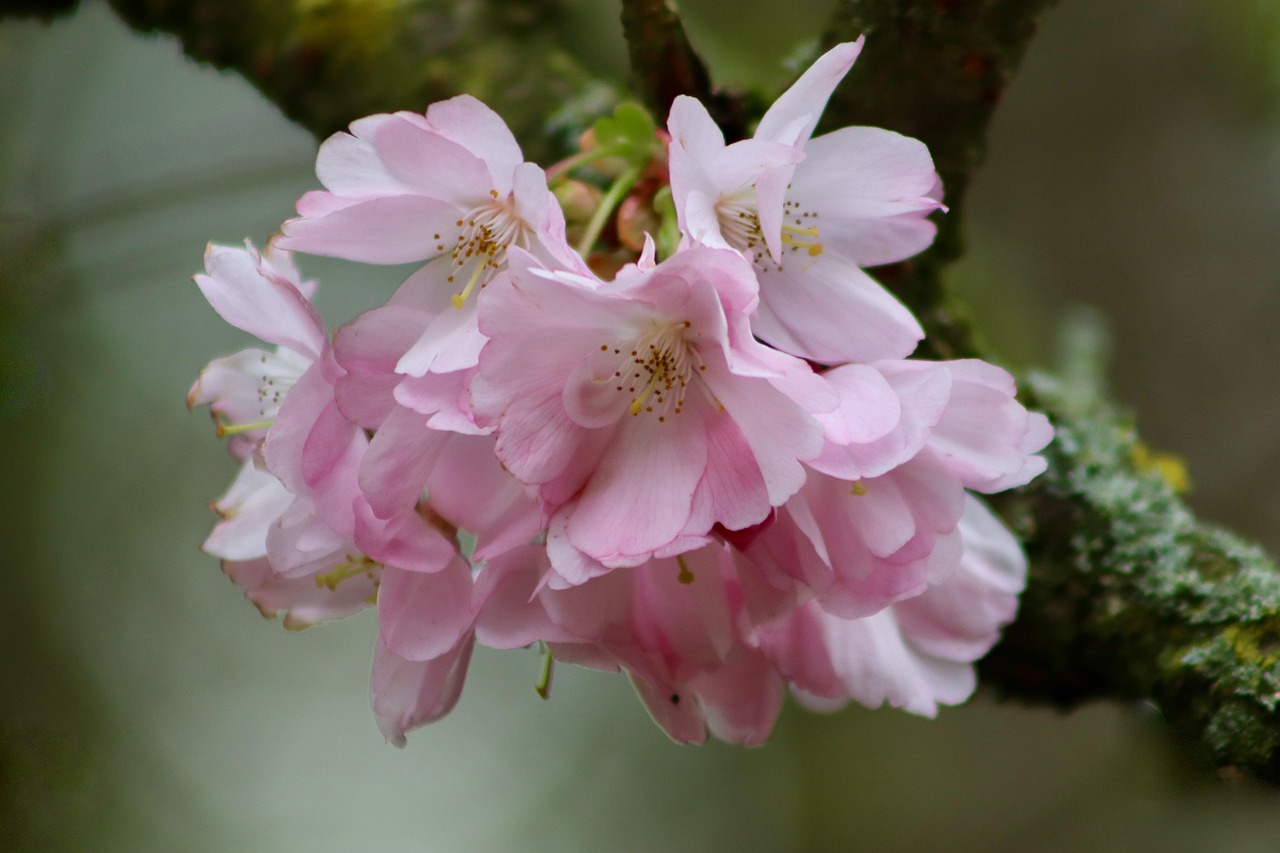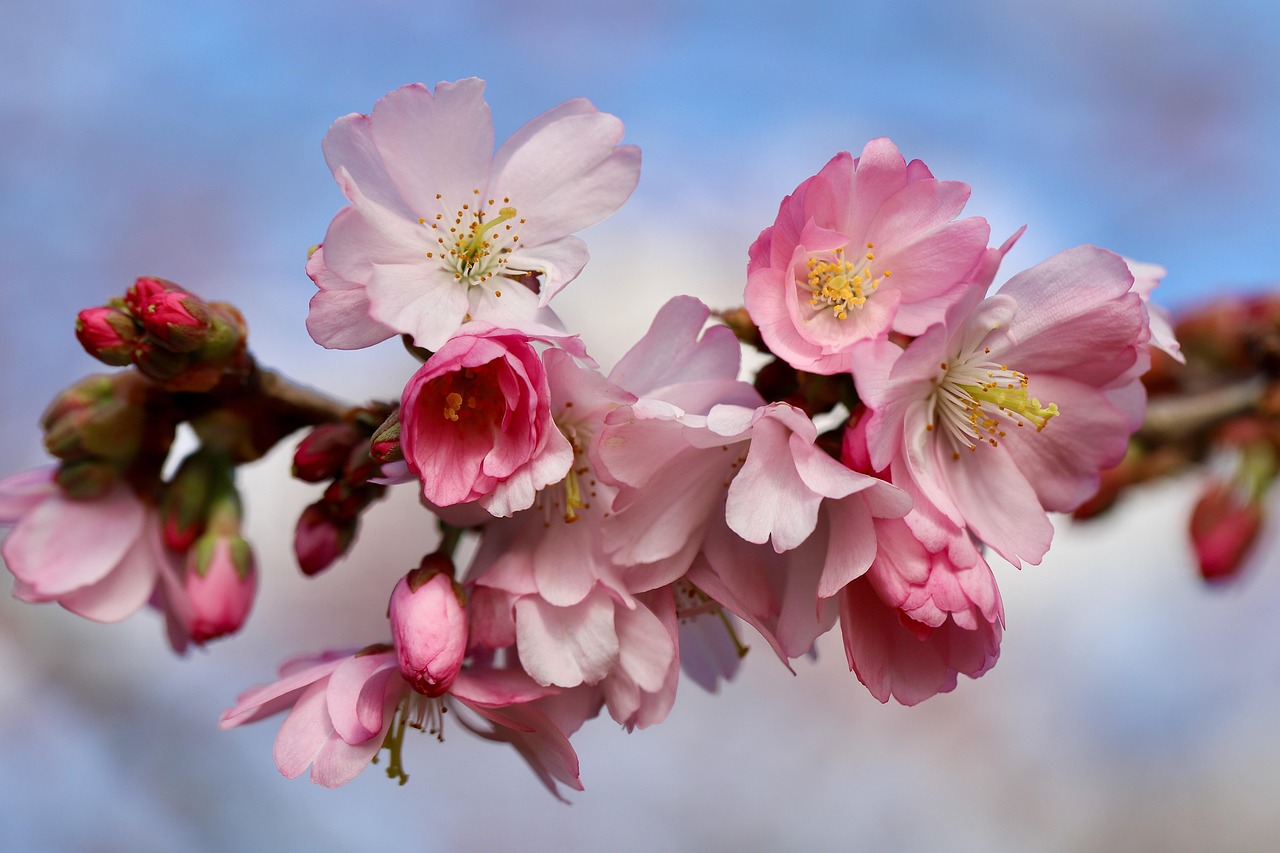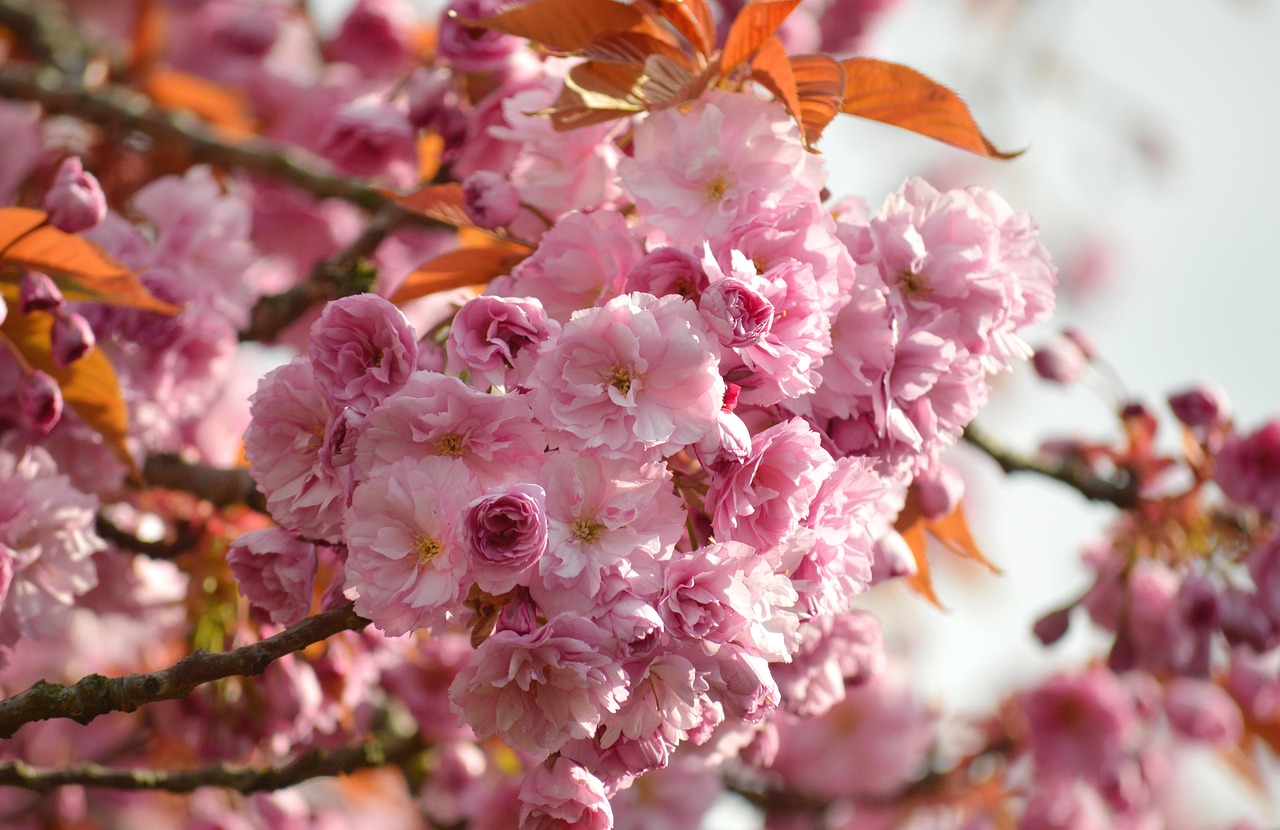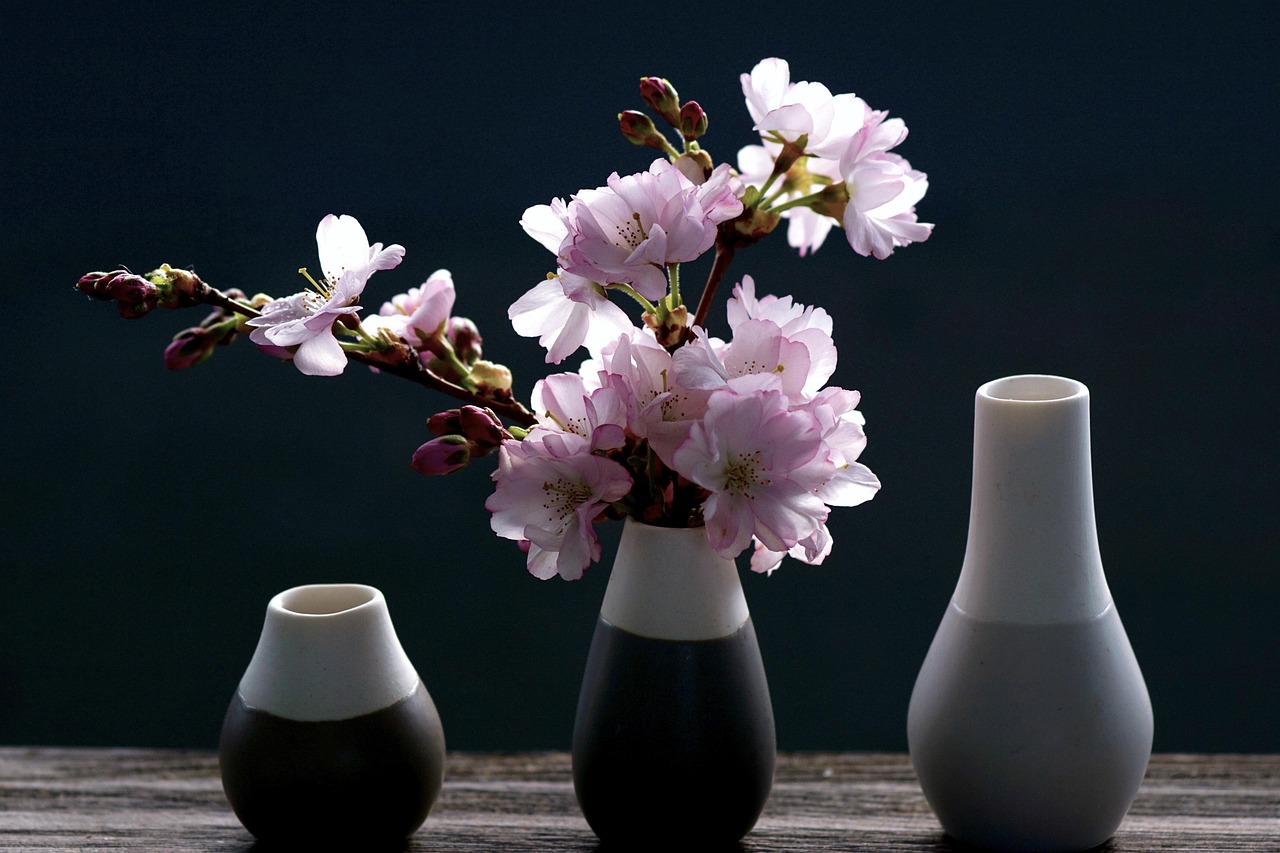Pruning Japanese cherry blossoms is essential for ensuring healthy trees that produce beautiful blooms during festivals. Proper pruning techniques promote better air circulation, sunlight exposure, and overall tree health, enhancing the display of flowers during peak bloom season.
Japanese cherry blossoms, or sakura, are iconic symbols of spring in Japan and other parts of the world. They attract millions of visitors during the cherry blossom festival season. These trees are not only celebrated for their beauty but also hold cultural significance. Festivals often feature picnics under blooming trees, creating a festive atmosphere. To maintain the health and aesthetics of these trees, regular pruning is necessary.

Pruning helps shape the tree, encourages new growth, and prevents diseases. Knowing when and how to prune is crucial for optimal results. The ideal time for pruning cherry blossom trees is in late winter or early spring, just before the blooming season starts. This timing allows the trees to recover quickly and promotes vigorous blooming.
Importance of Pruning Cherry Blossoms
Pruning cherry blossom trees offers several benefits that enhance their beauty and health. Here are some key points to consider:
- Improved Air Circulation: Pruning removes dense areas of branches, allowing for better airflow. This reduces the risk of fungal diseases.
- Enhanced Sunlight Exposure: Proper pruning ensures that sunlight reaches all parts of the tree, promoting even growth and vibrant blooms.
- Shaping and Aesthetics: Regular pruning helps maintain a pleasing shape, which is essential for ornamental trees in public spaces.
- Encouragement of New Growth: Pruning stimulates new growth, leading to more blossoms in the following seasons.
- Health Maintenance: Removing dead or diseased branches prevents the spread of pests and diseases.
Understanding the various types of cherry blossom trees is also important for effective pruning. Different species may have specific needs regarding size and growth patterns. The most common types include:

| Type of Cherry Blossom | Characteristics | Ideal Pruning Time |
|---|---|---|
| Yoshino Cherry (Prunus x yedoensis) | Light pink flowers; fast growth; popular in parks | Late winter to early spring |
| Kwanzan Cherry (Prunus serrulata ‘Kwanzan’) | Double pink flowers; robust growth; great for landscaping | Late winter to early spring |
| Saito Cherry (Prunus sargentii) | Deep pink flowers; hardy; great for colder climates | Late winter to early spring |
| Weeping Cherry (Prunus pendula) | Cascading branches; elegant appearance; often used as ornamental trees | Late winter to early spring |
The pruning process involves several key steps that ensure the best results. Each step contributes to the overall health and appearance of the tree. The basic steps include:
- Assessment: Examine the tree for dead, damaged, or diseased branches.
- Tools: Use clean, sharp pruning shears to make precise cuts.
- Cutting Technique: Make cuts at a 45-degree angle to promote healing.
- Remove Suckers: Eliminate suckers growing from the base or along the trunk.
- Thinning: Thin out crowded branches to improve air circulation and sunlight exposure.
- Shaping: Shape the tree by removing branches that disrupt its natural form.
Following these steps will help ensure that your cherry blossom trees remain healthy and beautiful for years to come. Additionally, keeping an eye on local weather conditions can inform your pruning schedule. Unseasonably warm weather can cause early blooming, and trees must be ready for festival displays.
Regular maintenance is key to enjoying the spectacular blooms that cherry blossom trees offer during festivals. With proper care and attention, these trees will continue to flourish and provide joy to communities and visitors alike.

As the cherry blossom season approaches, communities often prepare for festivals that celebrate this beautiful phenomenon. The careful pruning of cherry blossom trees contributes significantly to the success of these events. Well-maintained trees create a stunning backdrop for festivities, enhancing the overall experience for attendees.
A well-pruned cherry blossom tree not only looks attractive but also serves as a testament to the care taken by gardeners and arborists. Their efforts ensure that these trees remain resilient against pests and diseases while producing the breathtaking blooms associated with springtime celebrations.
This knowledge on pruning techniques can empower anyone responsible for caring for cherry blossom trees. Whether you are a professional gardener or a passionate homeowner, understanding these principles will help you enjoy the full beauty of your cherry blossoms during festival times.

Tools and Techniques for Pruning Cherry Blossoms
Having the right tools is essential for effective pruning. The quality and type of tools used can significantly influence the outcome. Here is a list of essential tools that every gardener should consider when pruning cherry blossom trees:
- Pruning Shears: Sharp, hand-held shears are ideal for cutting smaller branches and stems. Look for bypass shears, which make clean cuts.
- Loppers: These are useful for reaching higher branches. Loppers provide more leverage and are suited for branches up to two inches in diameter.
- Saws: For larger branches, a pruning saw is necessary. A folding saw is portable and effective for bigger cuts.
- Disinfectant: Cleaning your tools between cuts with a disinfectant is crucial to prevent the spread of disease.
- Gloves: Protective gloves can help prevent injuries while working with sharp tools or thorny branches.
Using the correct technique while pruning is just as important as having the right tools. Below are some recommended techniques to ensure successful pruning:
Pruning Techniques
- Make Clean Cuts: Aim to cut at a 45-degree angle. This promotes quicker healing and reduces the risk of disease.
- Follow the 1/3 Rule: When pruning, never remove more than one-third of the tree’s canopy at once. This rule helps maintain the tree’s health and vigor.
- Keep Natural Shape: Always aim to maintain the natural shape of the tree. Avoid excessive cutting that can lead to an unnatural appearance.
- Remove Dead or Dying Branches: These branches can attract pests and diseases. Regularly inspect and remove them to keep the tree healthy.
- Focus on Growth Patterns: Pay attention to how branches grow. Prune back to a lateral branch or bud that is facing the desired direction.
Timing Your Pruning
The timing of pruning cherry blossom trees can greatly affect their blooming potential. Understanding the growth cycle of these trees is key to successful pruning. Here are some guidelines on when to prune:
- Late Winter to Early Spring: This is generally the best time for pruning before new growth emerges. It allows for a stronger bloom in spring.
- Avoid Summer Pruning: Summer pruning can encourage new growth that may not have enough time to harden before winter.
- Post-Bloom Pruning: Some gardeners prefer to prune after blooming to enhance shape and remove spent flowers. However, this may reduce next season’s blooms.
Common Mistakes in Pruning Cherry Blossoms
Even experienced gardeners can make mistakes when pruning cherry blossoms. Being aware of common pitfalls can help you achieve better results:
- Over-Pruning: Removing too much foliage can stress the tree and reduce flowering in subsequent years.
- Poor Cut Placement: Cutting too close to the trunk or leaving stubs can harm the tree. Always cut just above a bud or lateral branch.
- Ignoring Tree Health: Failing to assess the overall health of the tree before pruning can lead to further problems. Always check for signs of disease or pest infestation.
- Neglecting Tool Maintenance: Using dull or dirty tools can result in jagged cuts that may harm the tree. Regularly sharpen and disinfect your tools.
- Pruning Without a Plan: Going into pruning without a clear strategy can lead to haphazard cuts. Always have a plan based on your goals.
The Role of Soil and Fertilization
The health of cherry blossom trees is influenced not only by pruning but also by soil quality and fertilization. Providing adequate nutrients helps trees recover from pruning and promotes vibrant blooms. Here are some tips regarding soil and fertilization:
Soil Requirements
Cherry blossoms thrive in well-draining soil that retains some moisture. Consider the following soil characteristics:
- PH Level: Aim for slightly acidic to neutral soil (pH 6-7).
- Organic Matter: Incorporate compost or well-rotted manure to enhance soil quality and provide essential nutrients.
- DRAINAGE: Ensure proper drainage to prevent root rot. Raised beds can be beneficial in areas with heavy clay soil.
Fertilization Tips
Applying fertilizer at the right time also plays an important role in tree health:
- Spring Fertilization: Apply a balanced fertilizer in early spring as new growth begins.
- Avoid Over-Fertilizing: Too much fertilizer can lead to excessive leaf growth at the expense of flowers.
- Slow-Release Fertilizers: Consider using slow-release options to provide steady nutrition throughout the growing season.
A healthy soil environment combined with thoughtful pruning practices will ensure that your cherry blossom trees remain beautiful and robust for years to come. By understanding these essential aspects, you can better prepare your trees for the stunning displays they are known for during festivals.
Pest and Disease Management for Cherry Blossoms
Maintaining healthy cherry blossom trees involves being vigilant about pests and diseases. Identifying and addressing these issues promptly is crucial for the longevity and beauty of the trees. Here, we will explore common pests and diseases that affect cherry blossoms, along with effective management strategies.
Common Pests
Pests can pose significant threats to cherry blossom trees. Below are some of the most common pests:
- Cherry Fruit Fly: This pest lays eggs in the fruit, leading to premature dropping. Regular monitoring and removal of affected fruit are essential.
- Aphids: These small insects suck the sap from leaves, causing curling and yellowing. They can be controlled with insecticidal soap or neem oil.
- Spider Mites: These tiny pests thrive in dry conditions and can cause leaf discoloration. Increasing humidity and applying miticides can help manage infestations.
- Scale Insects: These pests attach themselves to branches and trunks, sucking sap. Regular inspection and treatment with horticultural oil can eliminate them.
Disease Threats
In addition to pests, cherry blossom trees are susceptible to several diseases. Being aware of these can help in implementing preventative measures:
- Crown Gall: This bacterial infection causes galls on the roots and stems, weakening the tree. The best management is to remove affected areas and ensure proper sanitation.
- Powdery Mildew: This fungal disease results in white powdery spots on leaves. It can be treated with fungicides or by improving air circulation through proper pruning.
- Leaf Spot: Various fungi can cause leaf spots, leading to premature leaf drop. Regularly cleaning fallen leaves and applying fungicides can help control this issue.
- Root Rot: Caused by overwatering or poor drainage, root rot leads to tree decline. Ensuring well-drained soil is essential for prevention.
Integrated Pest Management (IPM) Strategies
Implementing Integrated Pest Management (IPM) strategies can enhance the health of cherry blossom trees while minimizing pesticide use. Here are key components of IPM:
Monitoring
Regular monitoring of trees is vital for early detection of pests and diseases. Consider the following practices:
- Visual Inspections: Conduct weekly inspections during the growing season to check for signs of pests or diseases.
- Sticky Traps: Use yellow sticky traps to monitor flying insect populations. This helps in assessing pest levels and determining action thresholds.
- Soil Testing: Conduct soil tests to identify nutrient deficiencies that may make trees more susceptible to pests and diseases.
Preventative Measures
Taking preventive measures can significantly reduce the risk of pest infestations and diseases:
- Healthy Practices: Ensure trees are well-watered and fertilized according to their needs, promoting strong growth.
- Companion Planting: Incorporate companion plants that deter pests or attract beneficial insects, such as ladybugs or lacewings.
- Mulching: Apply organic mulch around the base of trees to retain moisture and suppress weeds that may harbor pests.
Treatment Options
If pest or disease problems arise, consider these treatment options:
- Cultural Controls: Adjust watering practices, improve soil quality, and ensure proper spacing between trees to reduce stress and disease susceptibility.
- Biological Controls: Introduce beneficial insects or nematodes that prey on harmful pests. This method is eco-friendly and effective in managing populations.
- Chemical Controls: Use pesticides as a last resort, opting for targeted applications that minimize harm to beneficial insects. Always follow label directions.
The Role of Pruning in Pest Management
Effective pruning plays a significant role in pest management for cherry blossom trees. By understanding how pruning affects pest populations, gardeners can take proactive steps to protect their trees:
Enhancing Airflow
Properly pruned cherry blossom trees have better airflow around their branches. This reduces humidity levels, making it less favorable for fungal diseases like powdery mildew.
Reducing Pests’ Habitat
Pest species often thrive in dense foliage or poorly maintained areas. By thinning out crowded branches through pruning, gardeners can diminish the habitat available for pests.
Early Detection
Regular pruning allows for closer inspections of the tree’s health. Gardeners can identify potential pest issues early on, allowing for quicker intervention and treatment.
Community Involvement and Education
Community involvement plays a vital role in maintaining cherry blossom trees, especially in public spaces. Educational programs can foster awareness about proper care and pest management techniques among community members.
- Workshops: Organize community workshops focused on pruning techniques, pest management strategies, and general tree care.
- Volunteer Programs: Establish volunteer days for community members to help maintain local cherry blossoms through pruning and care.
- Information Dissemination: Create informative brochures or online resources that educate the public about cherry blossom care.
A collective effort towards maintaining cherry blossoms ensures vibrant displays during festival seasons, enhancing the community’s appreciation for these beautiful trees. By engaging with local residents and sharing knowledge, gardeners can cultivate a deeper connection with nature while preserving the beauty of cherry blossoms for generations to come.
Enhancing Cherry Blossom Festivals Through Community Engagement
Cherry blossom festivals are not only a celebration of nature’s beauty but also an opportunity for communities to come together. Engaging local citizens in the care and maintenance of cherry blossom trees fosters a sense of ownership and pride. When community members actively participate, the shared responsibility enhances the overall festival experience.
To further promote community involvement, consider implementing initiatives that highlight the significance of cherry blossoms. Here are some additional strategies:
- Art Competitions: Host art competitions featuring cherry blossoms as the theme. This can engage local artists and create beautiful decorations for the festival.
- Nature Walks: Organize guided nature walks during the blooming season. Educators can discuss the ecological importance of cherry blossoms and their role in local ecosystems.
- Cultural Performances: Incorporate cultural performances that celebrate the tradition of cherry blossom viewing (hanami). Music, dance, and storytelling can enrich the festival atmosphere.
These activities can help cultivate a deeper appreciation for cherry blossoms while reinforcing the importance of maintaining these trees through proper care and pruning. Community engagement not only enhances the festival but also ensures that future generations will enjoy the beauty of cherry blossoms.
Promoting Environmental Awareness
Incorporating environmental awareness into cherry blossom festivals can elevate their significance. Educating participants about the ecological benefits of trees promotes sustainability. Here are some approaches to consider:
- Sustainability Initiatives: Implement recycling programs during festivals to minimize waste. Encourage vendors to use eco-friendly materials.
- Tree Planting Efforts: Organize tree planting events as part of the festival. This allows attendees to contribute directly to the environment.
- Workshops on Biodiversity: Offer workshops focused on local flora and fauna, emphasizing how cherry blossoms contribute to biodiversity.
By promoting environmental awareness alongside cultural celebrations, communities can create a holistic experience that emphasizes both enjoyment and stewardship of nature.
Future Directions for Cherry Blossom Care
As climate change presents new challenges for plant health, it is essential to adapt and innovate in cherry blossom care practices. Ongoing research into pest resistance, disease management, and climate adaptation strategies will be vital in preserving these iconic trees. Here are some future directions for managing cherry blossoms:
- Research and Innovation: Collaborate with local universities or horticultural societies to study cherry blossom varieties that may be more resilient to changing climatic conditions.
- Technology Use: Explore using technology such as drones or soil sensors to monitor tree health and soil conditions more effectively.
- Community Science Projects: Encourage citizen scientists to collect data on tree health and blooming patterns, contributing valuable information to researchers.
These forward-thinking approaches can help ensure the longevity of cherry blossom trees, allowing future generations to enjoy their beauty during festivals.
Conclusion
Pruning Japanese cherry blossoms is a critical practice that enhances their health and beauty, making them a focal point during festivals. Understanding the importance of timing, techniques, and community involvement plays a significant role in successful tree care. The joy these trees bring during peak bloom is not merely a visual spectacle but a cultural celebration that unites communities.
Moreover, by engaging local residents in caring for these trees, we create a stronger connection between people and nature. Community initiatives, education, and sustainability efforts are essential for maintaining the beauty of cherry blossoms for years to come. As we continue to cherish these stunning trees, let us also commit ourselves to their care, ensuring that they thrive through changing times.
Ultimately, the success of cherry blossom festivals depends on our collective efforts. By fostering appreciation, implementing effective care techniques, and promoting environmental awareness, we can celebrate these remarkable trees while safeguarding their future. Together, we can ensure that cherry blossoms remain a symbol of beauty and unity in our communities for generations ahead.
